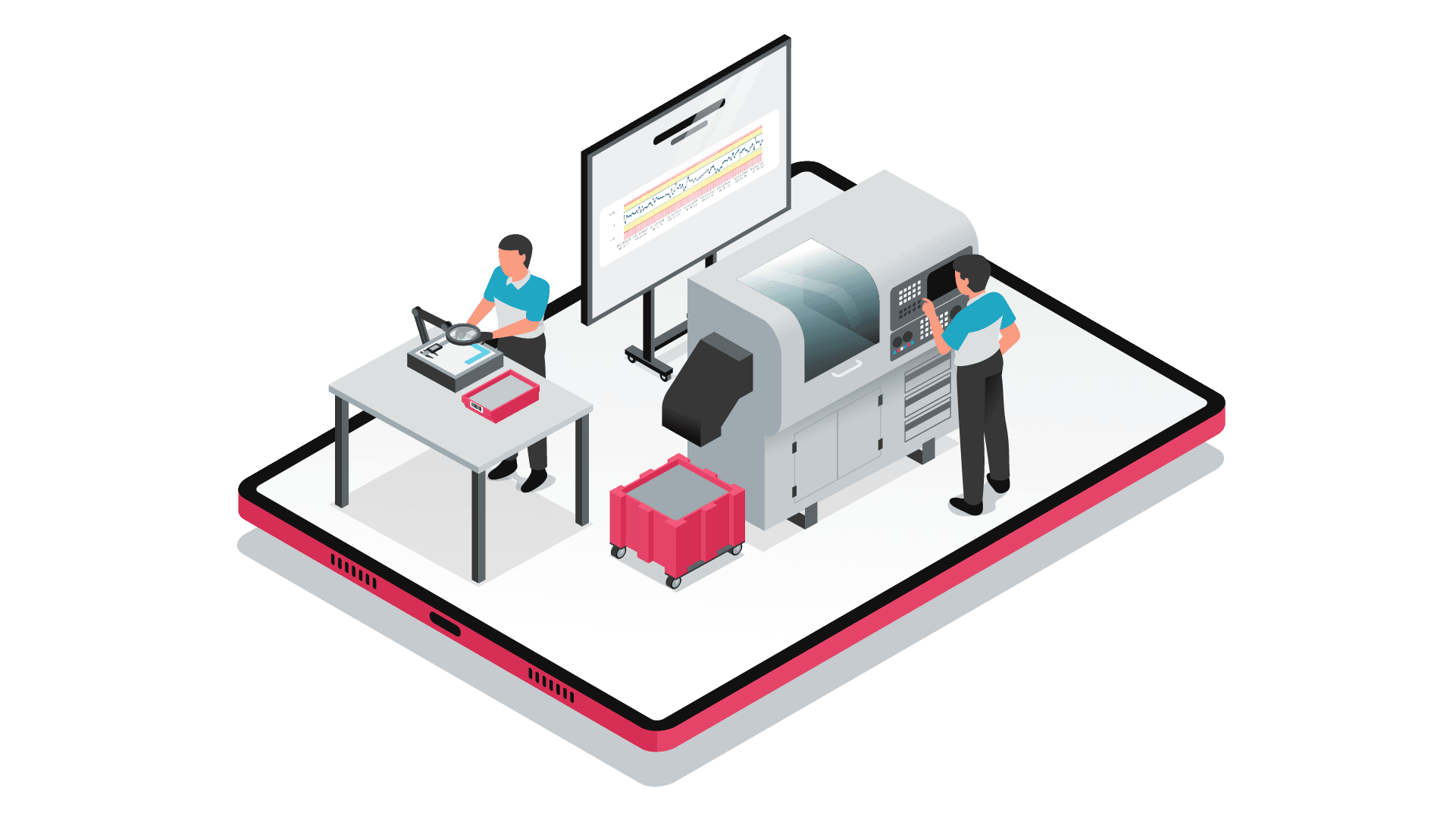Automated Process Control (APC) integrates automatic connection to the machine tool. This connection enables corrections to be sent to the machine tool. Over and above the initial objective of improving ergonomics, this development shows that it has a direct impact on production quality. In fact, by eliminating the risks of variability and errors linked to dependence on the human factor, it further improves OEE and scrap rates.
Automated Process Control (APC) has been developed for over eleven years and marketed since 2017 by Ellistat. The innovative software solution APC (Automated Process Control) to control the variability of production processes. APC automates machine tool set-up:
- Whatever the machine.
- Whatever the production mode: turning, milling, 3- to 5-axis and combined machining.
- No matter how complex the part.
Results :
- reduced scrap rate of 90%.
- reduced set-up time 75%/
- Average savings of around €20K per controlled machine tool per year.
Automated Process Control (APC) takes into account all the dimensions and offsets of a process to calculate the best fit. Machine learning algorithms automatically calculate the offsets to be applied to the machine, based on the measurement of a part.
Sending correction data to machining centers: traditional method or 4.0?
Until now, once the calculations had been made by Automated Process Control (APC), users had two options. The first, which we'll call "traditional", involves the APC proposing corrections to the operator, who then enters them into the NC. The second, developed in a 4.0 philosophy, automatically sends the correction data to the machine.
Davy Pillet, CEO of Ellistat, explains: "We were astonished by the results of sending corrections automatically. Initially, we thought we'd just be making things easier for the operator. But the results have exceeded our expectations. By sending corrections automatically, we've seen the machines' OEE rise and scrap rates fall. And yet, we're still calculating the same correctors. We have found that the traditional method, where the operator sends the data to the machine, creates variability: between different operators, input errors, the operator's choice not to correct a particular tool or not to respect the +/- 1 micron, etc. The human factor accounts for a very large proportion of machine variability. The human factor accounts for a very large proportion of machine variability. By removing the human factor from corrections, we're creating a true 4.0 workshop, and performance is feeling the pinch."
By way of example, in 2020, the Melisey (Haute-Saône) site of the LISI Automotive Division of the LISI Group, which specializes in the production of forged and then machined automotive parts, is looking to achieve gains in operational efficiency and quality. Before the use of Automated Process Control (APC), setting up machining centers required several iterations and consumed several parts to reach the required quality level. Now, only one part is required. Automated Process Control (APC) saves around 75% in set-up time. Since 2021, corrections have been transferred directly to the multispindles. The scrap rate has been reduced from 3.5% to less than 0.1% thanks to the algorithm that auto-corrects the machine tool in near-real time as soon as it deviates, resulting in a reduction in scrap rate of around 95 %.
Stability and optimum production quality: the APC integrates automatic sending of corrections to machining centers as standard.
In view of customer feedback on the two methods of sending corrections to machining centers, ELLISTAT has opted for automation. As a result, "method 4.0" for sending corrections automatically has been offered as standard in the software since the beginning of 2022. Automated Process Control (APC) enables automatic, closed-loop setting of machine tools based on measurements of a single part. The automatic connection is operational on Fanuc, Siemens, Heidenhain, Mitsubishi, Fagor, Okuma and Mazak NCs.





